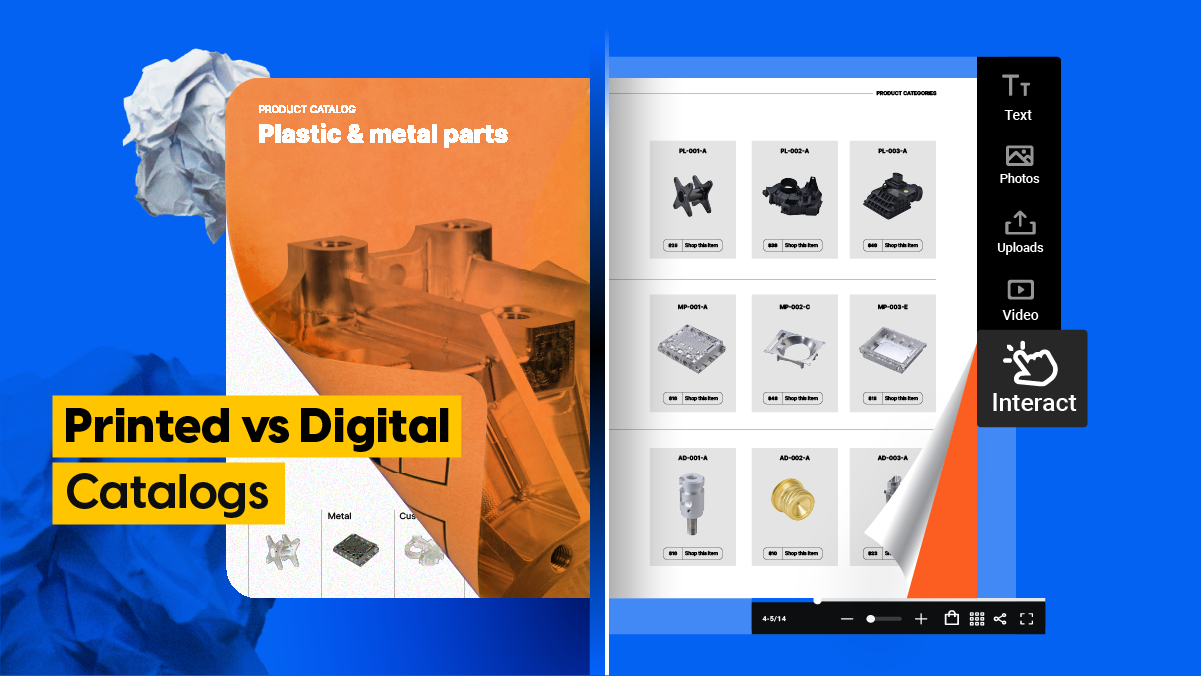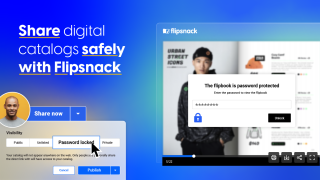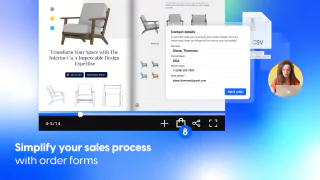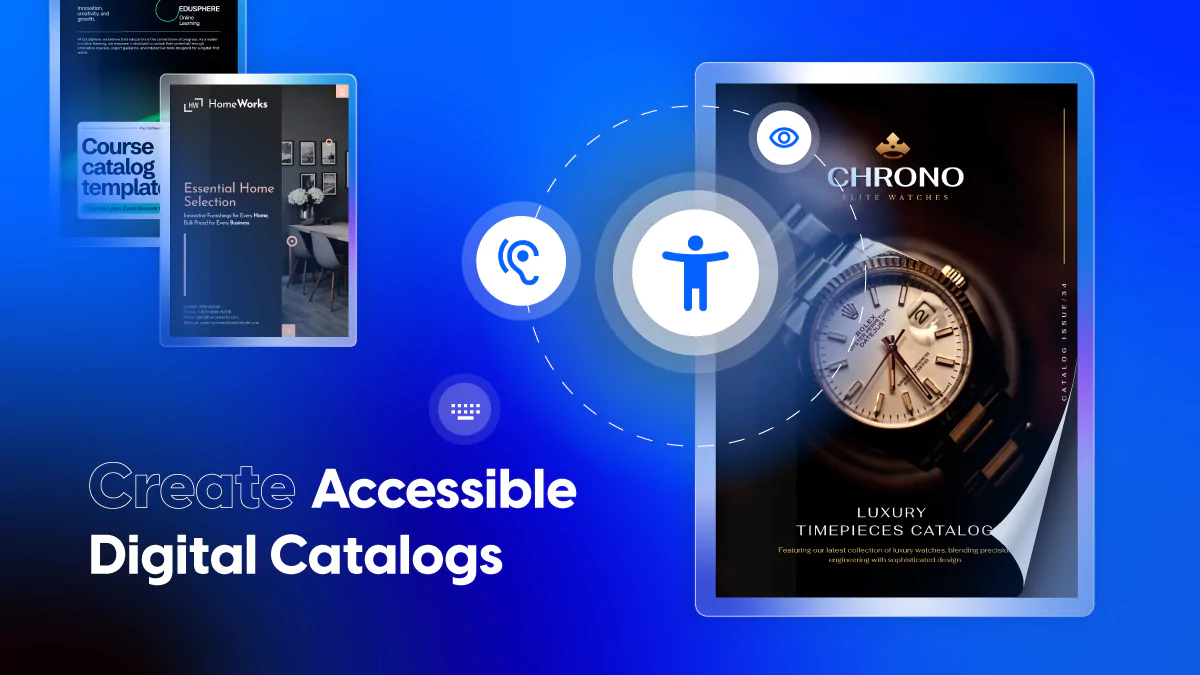Printed vs digital catalogs – from paper to online success
Last updated: March 12th, 2025
For B2B manufacturers and wholesalers, staying competitive means adapting to changing buyer expectations and evolving sales processes. One critical decision businesses face is whether to stick with traditional printed catalogs or transition to digital alternatives. While print catalogs have long been a staple in B2B sales, the rise of digital transformation has pushed many industry leaders—like Electrolux and Melissa & Doug—to rethink their approach..
But is going digital truly more effective? And what challenges should businesses expect when making the switch?
In this article, we’ll explore how leading brands have successfully transitioned from print to digital catalogs, the biggest roadblocks B2B companies encounter in this process, and the real impact digital solutions can have on sales and operational efficiency. Whether you’re weighing the pros and cons or looking for real-world success stories, this guide will help you determine the best path forward for your business.

Table of contents
The shift from printed to digital catalogs
For over a century, printed catalogs have been a cornerstone of B2B sales, providing businesses with a structured way to showcase products and streamline orders. However, while the format remained largely unchanged, the way buyers engage with product information has evolved dramatically.
The transition to digital catalogs started gradually, but the recent pandemic served as a catalyst, pushing wholesalers, manufacturers, and distributors to rethink how they reach and engage customers. In today’s fast-paced B2B landscape, a static printed catalog is no longer enough—buyers expect interactive, easily accessible, and up-to-date product information at their fingertips.
Modern digital catalogs go beyond simply displaying products; they enhance the customer experience with interactive elements, real-time updates, and seamless ordering functionalities. For businesses looking to stay competitive, digital catalogs are no longer just an option—they’re a strategic necessity.
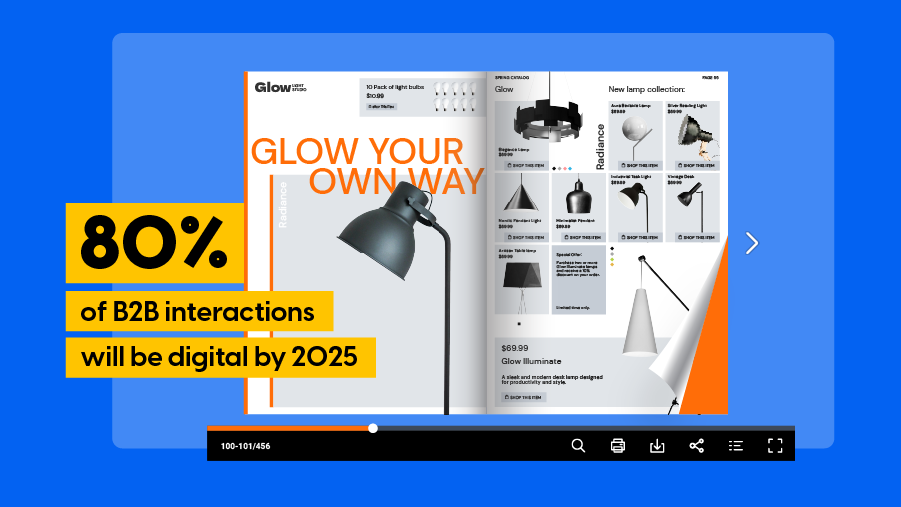
With 70% of American consumers now shopping online and Gartner’s projection that 80% of B2B interactions will be digital by 2025, the importance of digital wholesale catalogs cannot be overstated. They are essential for staying competitive and reaching B2B clients, including businesses, trade partners, retailers, and contractors. Whether you’re already engaging in B2B sales online or looking to expand into this realm, understanding digital product catalogs is key to navigating the landscape of the wholesale industry.
Let’s examine the different characteristics of these two mediums to understand their unique roles in contemporary selling processes. But first, why even consider switching to digital catalogs, in a few words?
Why should you make the switch from printed to digital catalogs?
Sticking to printed catalogs in an increasingly digital world isn’t just inconvenient—it could be costing your business time, money, and valuable opportunities. Updating a printed catalog means wasted resources on reprints, delays in getting new products to market, and missed chances to engage buyers in real time. Meanwhile, your competitors who have embraced digital catalogs are already benefiting from instant updates, seamless customer interactions, and data-driven decision-making.
Digital catalogs don’t just replace print. They streamline operations, improve customer experiences, and enhance sales strategies. Instead of treating your catalog as a static document, imagine it as a dynamic sales tool that adapts to market changes, integrates with e-commerce platforms, and provides real-time insights into customer behavior. In a competitive B2B landscape, making the switch isn’t just about modernization—it’s about staying ahead.
Interactivity and engagement: static vs. dynamic experiences
Printed catalogs have long been valued for their paper feel and touch, but their static nature limits engagement. Once printed, they remain unchanged, requiring costly reprints for updates. Readers can browse but cannot interact, making them passive recipients of curated content rather than active participants in the buying process.
In contrast, digital catalogs transform the browsing experience into an interactive journey. Businesses can incorporate videos, 360-degree product views, interactive maps, and personalized recommendations—turning a simple catalog into an engaging sales tool. Customers can explore products in greater detail, watch demonstrations, and even place orders directly, all from a single platform.
By shifting to digital, businesses not only provide a richer, more immersive experience but also create a two-way interaction that fosters stronger engagement and drives higher conversion rates.
Distribution and accessibility: overcoming physical limitations of catalogs
Printed catalogs may evoke nostalgia, but their distribution is inherently restricted. Businesses relying on print face logistical challenges, high shipping costs, and limited reach—often constrained by geography and supply chain inefficiencies. Scaling distribution requires significant investment, making it difficult to expand into new markets quickly.
Digital catalogs, however, eliminate these barriers. With online accessibility, businesses can instantly reach global audiences, enabling partners and customers to browse products anytime, anywhere. A prime example is Electrolux, whose digital catalogs extend across borders and time zones, delivering tailored shopping experiences to a diverse audience. By using digital platforms, Electrolux not only maximizes exposure but also drives traffic and conversions with unparalleled efficiency.
Beyond global accessibility, digital catalogs also enhance inclusivity. Ensuring that all users—including those with disabilities—can engage with your content is crucial. Flipsnack’s AI-powered accessibility features automatically generate alt text summaries for each catalog page, enabling screen readers to interpret content seamlessly. Additionally, AI-powered translations allow businesses to localize their catalogs, making them even more accessible to international audiences.
By embracing digital catalogs, businesses break free from physical constraints, expand their market reach, and create more inclusive customer experiences.
Performance tracking & customer behavior – available in online catalogs
One of the biggest drawbacks of printed catalogs is the complete lack of performance tracking. Once distributed, there’s no way to measure how customers engage with the content, which products catch their attention, or how many leads the catalog generates. This absence of data makes it difficult for businesses to optimize their sales and marketing strategies.
Digital catalogs, on the other hand, provide real-time insights into customer behavior, enabling businesses to track engagement, analyze interactions, and tailor experiences accordingly. With Flipsnack’s advanced statistics features, businesses can:
- Track views, clicks, and time spent per page to understand what captures customer interest.
- Identify the most popular products and optimize future catalogs based on real engagement data.
- Monitor outbound link clicks to measure how effectively the catalog drives traffic to product pages or checkout.
Beyond tracking, these insights allow businesses to create personalized experiences. With data-driven intelligence, companies can refine product recommendations, adjust catalog layouts, and strategically position key offers to increase conversions. Instead of a one-size-fits-all approach, digital catalogs evolve into dynamic sales tools that adapt to customer preferences.
By leveraging the power of analytics, businesses can transform their catalogs from static product listings into engagement-driven, conversion-optimized sales assets—something print simply cannot achieve.
Real-time updates and maintenance flexibility
One of the biggest limitations of printed catalogs is their lack of flexibility. Once printed, prices, stock availability, and product details are set in stone—any changes require an entirely new print run, resulting in wasted materials, increased costs, and logistical headaches.
Digital catalogs eliminate this challenge by offering real-time updates with minimal effort. Instead of reprinting and redistributing physical copies, businesses can instantly update product listings, adjust pricing, or modify stock availability—all under the same catalog link. This ensures that customers always access the most up-to-date information without the confusion of outdated materials.

With Flipsnack’s real-time update feature, businesses can:
- Modify catalogs in real time without needing to resend links or reissue files.
- Ensure accurate pricing and stock availability, preventing order discrepancies and customer frustration.
- Make seasonal or promotional adjustments quickly, keeping marketing materials relevant and effective.
By switching to digital, businesses gain the agility to adapt on demand, ensuring that customers always interact with the latest and most accurate catalog version—something print can never offer.
Understanding modern B2B selling dynamics
B2B buyers have fundamentally changed the way they make purchasing decisions. Studies show that 68% of the buyer’s journey is now digital, with decision-makers preferring to conduct independent research rather than engage with sales teams early on. If your business isn’t meeting buyers where they are—online—you’re missing critical opportunities to influence their choices.
At the same time, alignment between sales and marketing teams is more crucial than ever. A seamless, digital-first approach ensures that potential customers receive consistent and compelling messaging throughout their journey. However, despite recognizing the importance of digital tools like enterprise CRM systems, e-commerce platforms, and cloud computing, many wholesale and manufacturing businesses remain resistant to full digital adoption.
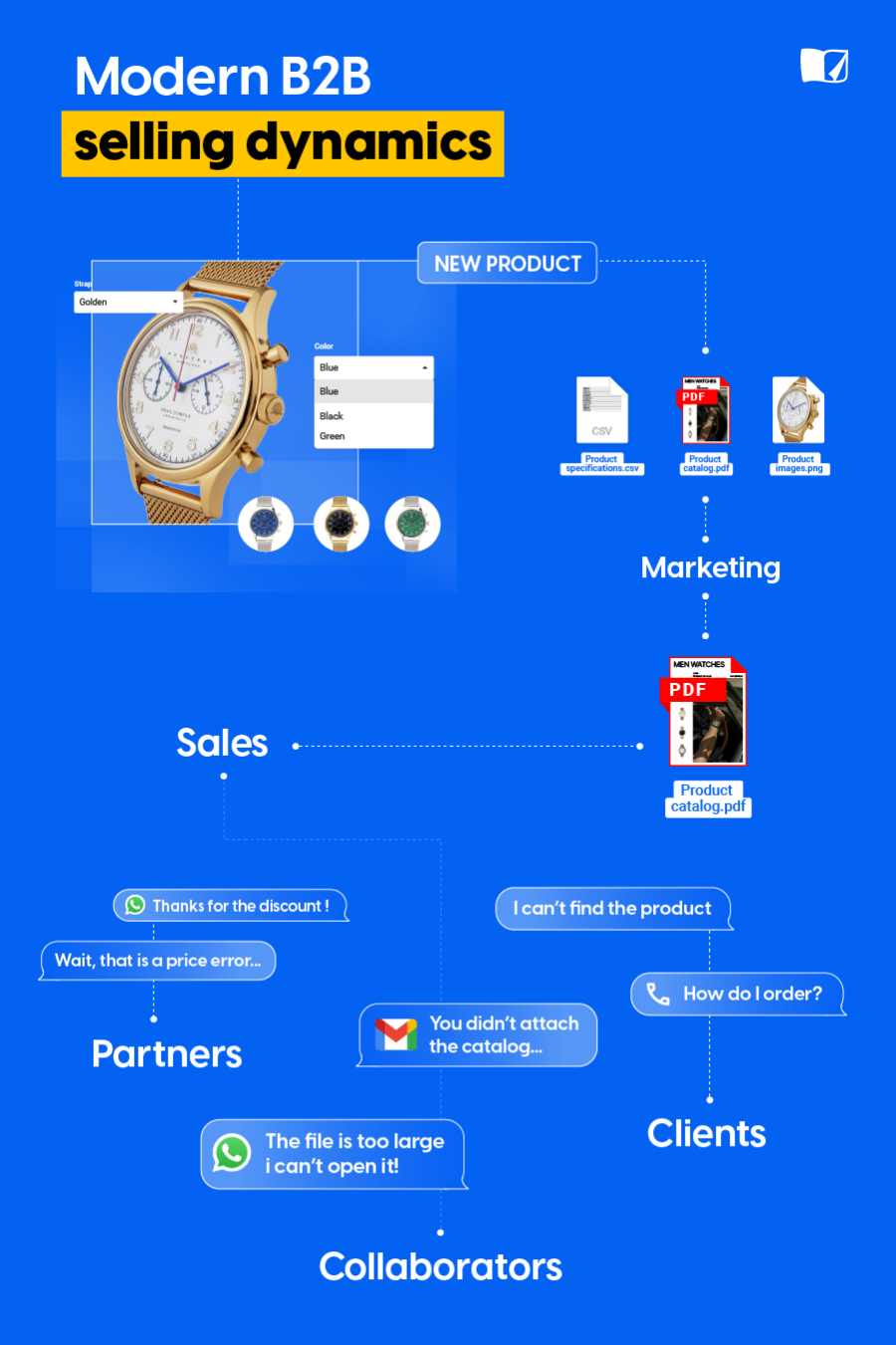
Traditionally, new product releases in B2B companies involve scattered, manual processes—sales teams rely on PDFs, Excel sheets, or printed catalogs, forwarding them via email chains or phone calls. This fragmented approach makes customizing offers, updating product information in real-time, and tracking sales performance incredibly challenging. Without a centralized, digital solution, businesses risk inefficiency, miscommunication, and lost opportunities in an increasingly competitive landscape.
This shift toward digital isn’t just a theory—it’s already happening. Leading brands have embraced digital catalogs to streamline their sales processes, enhance customer experiences, and drive higher conversions.
Let’s take a look at how companies using Flipsnack have successfully leveraged digital catalogs to increase sales, create catalogs faster, and stay ahead in a competitive market.
Real examples of digital catalog success stories
Melissa & Doug: Streamlining catalog creation and distribution
As a global toy brand, Melissa & Doug needed a more efficient way to manage their vast product catalogs across multiple markets. By switching to Flipsnack, they eliminated the time-consuming process of printing and distributing physical catalogs. Now, they can update product listings instantly, ensuring retailers and distributors always have access to the latest collections. This shift has accelerated their sales cycle and improved communication with partners worldwide.
Newell Brands: Enhancing sales enablement and engagement
With a diverse portfolio of brands like Sharpie, Rubbermaid, and Paper Mate, Newell Brands required a digital solution to keep their sales teams aligned. Using Flipsnack, they created interactive, mobile-friendly catalogs that enable sales representatives to showcase products on the go. Real-time updates ensure that pricing and product details remain accurate, while analytics provide insights into customer engagement—helping them refine their sales strategies and improve conversions.
Electrolux: A scalable digital catalog solution for global reach
For Electrolux, a leader in home appliances, printed catalogs were limiting their ability to reach global distributors efficiently. Flipsnack’s digital catalogs allowed them to offer a consistent brand experience worldwide, with the flexibility to update product information as needed. Their interactive catalogs not only provide a more engaging browsing experience but also help drive traffic and boost sales across multiple markets.

Switch from printed to digital catalogs with Flipsnack
More and more wholesalers and manufacturers are embracing digital catalogs as a smarter, more efficient alternative to print. As we’ve explored in this article, the benefits are clear—flexibility, cost savings, interactivity, and real-time insights that traditional catalogs simply can’t offer. In today’s fast-moving B2B landscape, relying on static, outdated materials can hold your business back.
Join other manufacturing and wholesale businesses that:
- Receive orders and quotations directly from their catalog
- Distribute catalogs privately or publicly
- Measure the impact of catalogs with real-time statistics
- Keep up-to-date and on-brand easily
Turn your product catalog into a seamless, interactive buying experience with Flipsnack. Reduce back-and-forth communication, simplify order management, and give your customers the engaging digital experience they expect.

